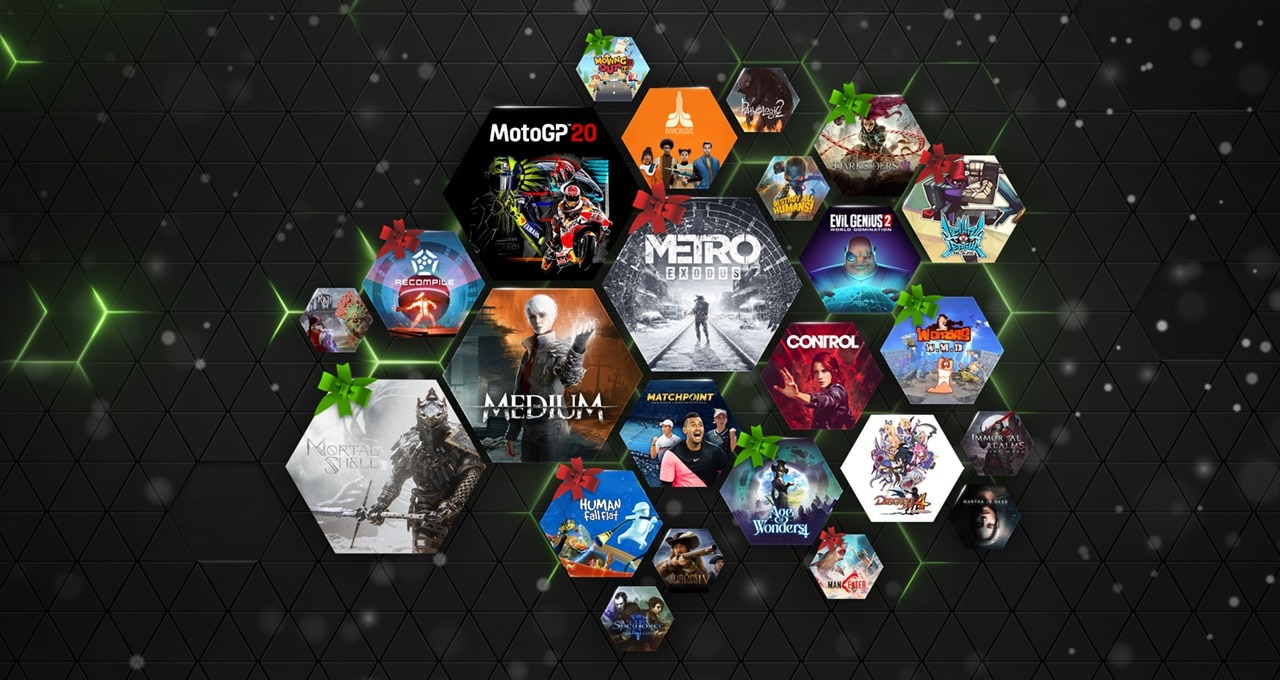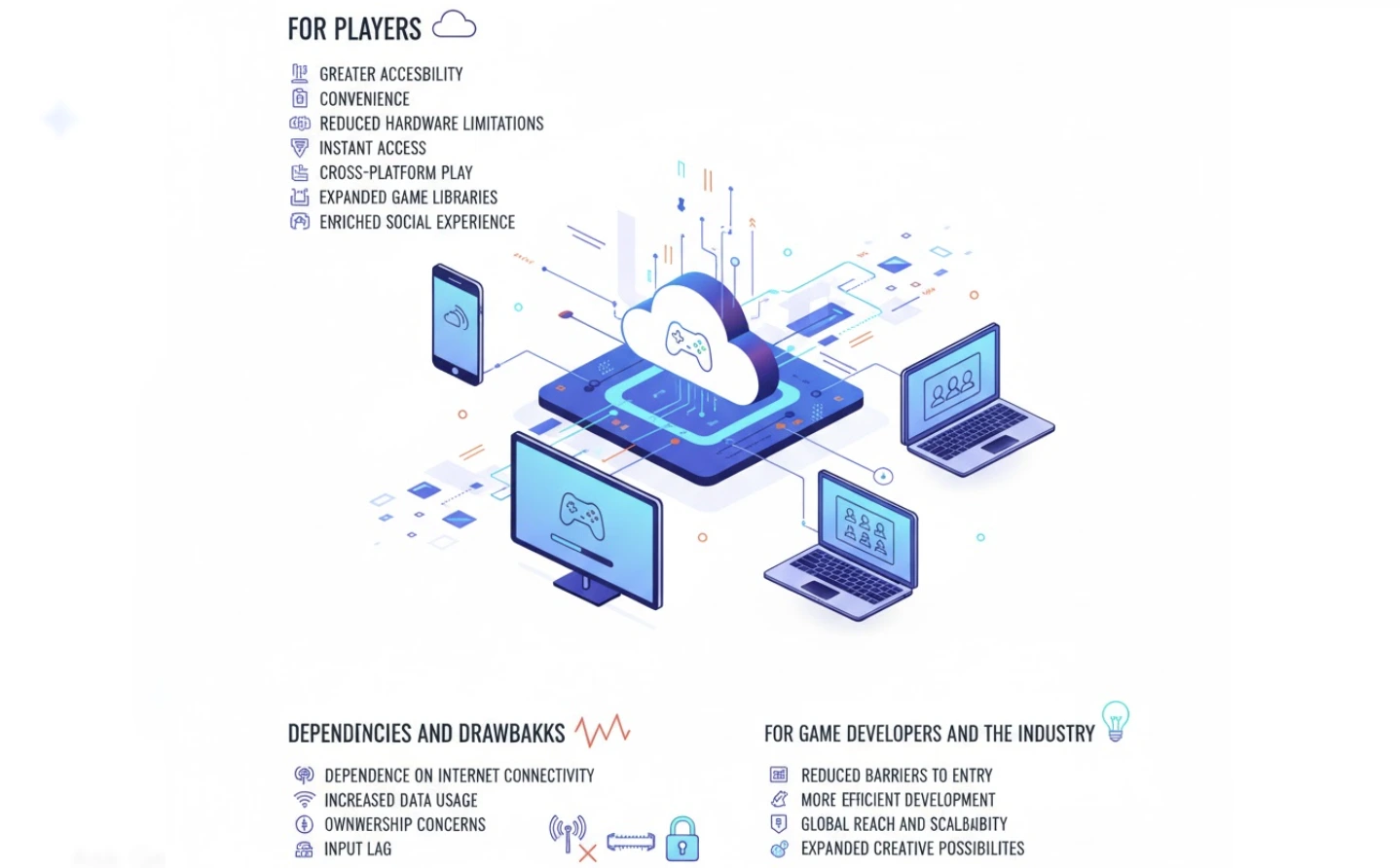The rise of cloud technology has been one of the most significant shifts in the gaming industry over the past decade. It has changed not only how we play games but also the very concept of ownership. Powerful hardware or consoles are no longer essential all you need is a stable internet connection. This opens up gaming to millions of people around the world, erasing the boundaries between platforms and devices. cloud services are shaping a new generation of players who value not the hardware itself, but convenience, speed and the freedom to play anywhere.
For players
cloud technology is creating a gaming experience with greater accessibility, convenience, and flexibility, but it also comes with notable drawbacks, such as reliance on a fast internet connection.
Advantages
- Reduce hardware limitations: Gamers no longer need expensive consoles or high end PCs to play the latest AAA titles. The processing is handle by powerful servers in the cloud, with the gameplay stream to the user’s device.
- Cross platform play: Cloud gaming services enable seamless play across a variety of devices, including smartphones, tablets, smart TVs, and laptops. A player can begin a game on one device and pick it up instantly on another without losing progress.
- Instant access: With cloud gaming, players can jump into a game almost instantly, without the need for lengthy downloads or installations. This also means game updates are applied on the server, ensuring players always have the latest version.
- Expanded game libraries: Subscription based models like Xbox Game Pass Ultimate give users access to a vast and constantly evolving library of games for a monthly fee, democratizing access to a diverse catalog of titles.
- Enriched social experience: Cloud servers can support massive, persistent online multiplayer worlds that were not possible with traditional hardware. This can enhance social interaction and enable new, more expansive gaming experiences.
Dependencies and drawbacks
- Dependence on internet connectivity: The quality of the cloud gaming experience is directly tied to the user’s internet connection. High speed, stable connections with low latency are essential to avoid lag, stuttering, and other performance issues.
- Increase data usage: Streaming high resolution, high frame rate games can consume significant amounts of data. This may be a concern for users with data caps or limit bandwidth.
- Ownership concerns: In a subscription base model, players pay for access to a library of games, not ownership. If they cancel their subscription, they lose access to the content.
- Input lag: Despite advancements, the inherent latency involve in sending player inputs to a remote server and receiving the stream video back remains a challenge, particularly for competitive, fast pace games.
For game developers and the industry
Cloud technology offers both significant opportunities and challenges for game developers and the broader industry, fundamentally changing how games are made, distribute, and monetize. The move toward cloud based infrastructure and streaming services reshapes the entire gaming ecosystem.
Opportunities
- Reduce barriers to entry: Indie developers and smaller studios can access powerful, scalable cloud infrastructure without a massive upfront investment in physical hardware. This levels the playing field against larger companies.
- More efficient development: Cloud based platforms allow globally dispersed development teams to collaborate in real time. Cloud resources can also be use for testing and deployment, enabling faster iteration and more efficient workflows.
- Global reach and scalability: The cloud allows developers to deploy their games globally in minutes and instantly scale server capacity up or down to meet player demand. This is crucial for managing traffic spikes during new game launches or events.
- New revenue streams: The subscription based model provides a more consistent, recurring revenue stream compare to a reliance on large, infrequent game launches. It also makes it easier to offer in game microtransactions and purchases.
- Expanded creative possibilities: With the raw processing power of the cloud, developers are free from local hardware constraints. This allows for the creation of more complex game worlds, sophisticated AI, and new, more immersive experiences.
Accessibility and Performance

Cloud services remove hardware hurdles so demanding games that once needed top tier graphics cards can now run on everyday devices like phones, low cost laptops and smart TVs. Cloud streaming flips the old model by rendering the game in a data center and sending you a video feed while your inputs go back to the server. Cloud upgrades feel real in play thanks to stronger server GPUs, smarter video compression and edge locations that trim latency so controls feel responsive without a big upfront investment.
At the same time, the importance of analytical platforms continues to grow. on the pages of lol live stats, you can see how cloud based systems process millions of data points in real time, providing match statistics, player rankings, and behavioral metrics.
Such technologies demonstrate how fast and efficient cloud driven infrastructure can be. It’s not just about streaming it is about responsiveness, data processing, and instant access to information.
The Evolution of the Gaming Experience
Cloud compute lifts design limits so developers can build larger, more detail worlds without worrying about your device’s memory or storage. Cloud connect worlds stay alive with dynamic weather, shifting events and systems that react to players across the globe rather than following a fix script. Cloud saves make continuity effortless so you can start on a PC, continue on a tablet and finish on a TV with progress synced and updates handle in the background.
The Growth of Multiplayer and Esports

Cloud technology has become the foundation for a new era of online competition. High data transfer speeds and minimal latency make it possible to hold matches without lag or technical interruptions something that seemed impossible just a few years ago. victory can come down to milliseconds. Thanks to cloud servers, tournaments in Valorant, CS2 and League of Legends are now more stable and fair, providing equal conditions for all participants regardless of their location.
These technologies turn esports into a fully fledged digital spectacle. Automated systems collect live statistics, track player actions and generate graphics and replays on the fly.
This enhances analytical accuracy and deepens viewer engagement. cloud solutions are what transform modern esports from simple competition into a technological ecosystem one where performance and entertainment work perfectly in sync.
The Integration of Artificial Intelligence and Cloud Technology
The combination of cloud computing and artificial intelligence is opening entirely new horizons for the gaming industry. Cloud servers provide the processing power and speed, while AI brings the ability to analyze, learn and adapt. this synergy is used in games like Apex Legends and Overwatch 2, where machine learning algorithms analyze player behavior, create balance matchmaking and adjust difficulty in real time. The result is a fairer, smoother and more personalize experience for every player.
- Thanks to the cloud, neural networks can train continuously data is gathered from millions of gaming sessions and instantly applied to improve balance or optimize gameplay.
- Games stop being static they evolve not only through updates and patches but “on the fly,” adapting to collective playstyles.
- The system can predict where a player tends to make mistakes, fine tune the challenge level or even suggest alternative paths through the game.
This fusion of cloud technology and AI will define the future of gaming. The cloud will provide the resources, while AI delivers flexibility and individuality.
We will see games where the story, enemies and even the atmosphere dynamically change based on the player’s emotions and decisions.
It is a step toward creating truly living worlds not ones that simply simulate actions, but ones that understand and respond intuitively to the human behind the screen.
Conclusion
Cloud technology is not just another step in gaming’s evolution it represents a complete shift in philosophy. It removes technical barriers, making the process universal, flexible and truly global. It no longer matters what device you are using all the computing power is in the cloud, providing the same level of performance and stability as a local setup. This levels the playing field for everyone, from casual players to professional esports athletes.


